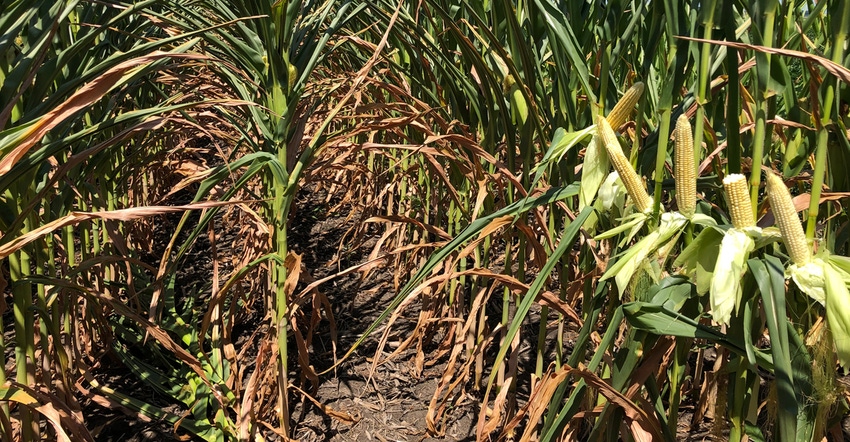August 24, 2020

It’s that time of year when you want to estimate corn grain yields. Dry weather conditions and derecho windstorm damage have increased the interest in corn yield estimations.
There are five components of corn yield that can be used to estimate yields. These include the number of ears per acre, rows of kernels on each ear of corn, kernels per row and kernel weight. Yield estimations will assume a certain kernel weight.
Kernel weight is difficult to estimate so usually a kernel weight is assumed. And that kernel weight may or may not represent the actual kernel weight for a given field. Dry weather conditions, corn hybrid characteristics and end-of-season weather will affect the final corn grain yield.
Yield estimation requires a certain level of judgment. It is best to be conservative on ear counts, rows of kernel count and kernel-per-row count.
Select a representative area of the field and collect the information. Count the ears in the representative length of row. Multiply the number of ears of corn by rows of kernels by kernels per row and divide by 90,000. The 90,000 figure represents the number of kernels per bushel of 15% corn grain.

Corn that has been affected by drought, dry weather or the derecho windstorm may not have sufficient kernel weight to have 90,000 kernels per bushel of dry corn grain. This weather-affected corn may require 100,000 or 110,000 kernels to achieve a bushel of dry grain.
Harvestable ears questionable
Yield estimations where extreme corn lodging occurred — as in fields affected by high winds from the Aug. 10 derecho — will require additional effort. Yield estimations under these conditions will require some judgment about harvestable ears. Additional effort will be required to decide how many of the ears on severely lodged corn will be gathered by a combine corn head.
Another method to estimate corn yield is to pick and weigh the ears of corn from a 1,000th of an acre. This method gives you an actual weight per acre but necessitates the use of a moisture estimate. The use of a 100-pound bushel, which will include the extra weight of the grain moisture and cobs, can be used to estimate corn yield. Therefore, each pound of ear corn in the hard dent stage from a 1,000th of an acre equals about 10 bushels per acre of dry corn grain per acre.
Evaluating corn yield potential prior to harvest can help you set the harvest schedule and make marketing decisions. However, yield evaluations can be misleading if not done with care. Crop uniformity has a big influence on the accuracy of any yield evaluation method. Samples should be taken randomly throughout a field to provide the best estimate. One sample for every 10 to 15 acres is usually sufficient unless conditions are variable. With drought and wind-damaged fields, more samples may be needed to improve the accuracy of the estimate.
Kassel is an ISU Extension field agronomist at Spencer in northwest Iowa. Email [email protected].
About the Author(s)
You May Also Like






